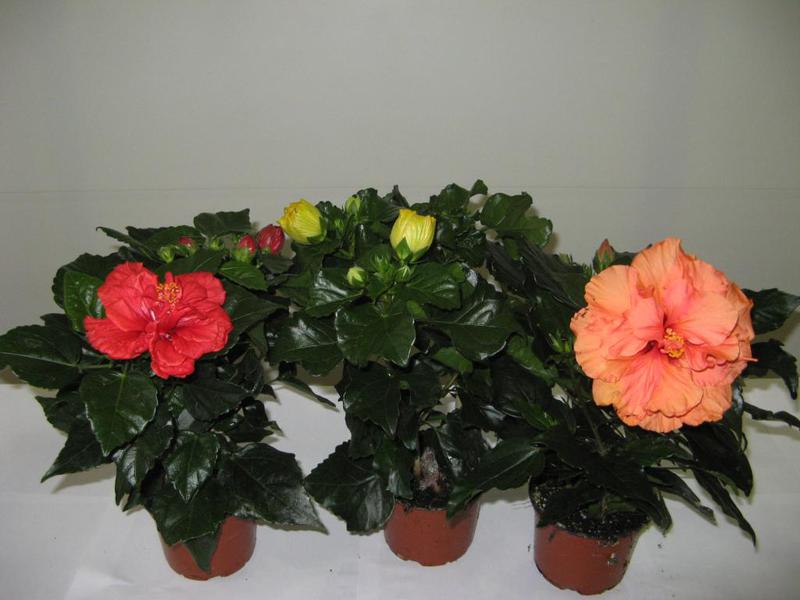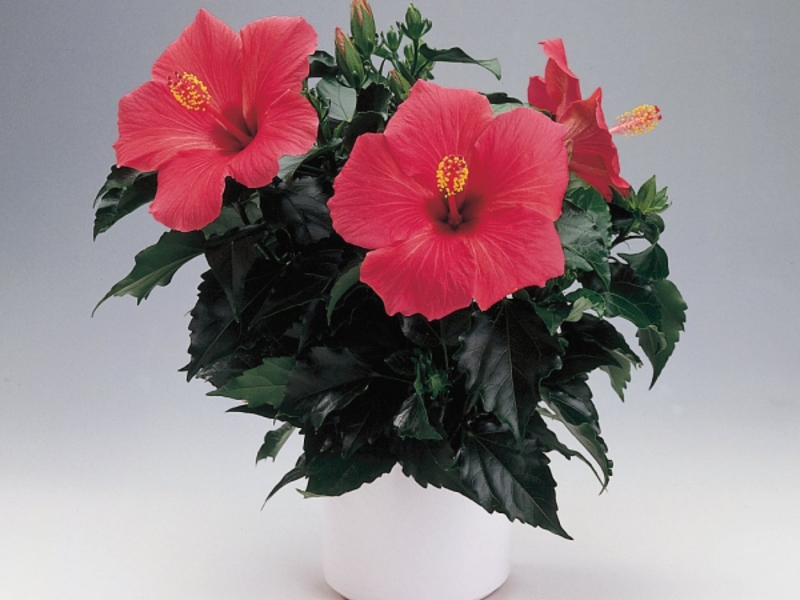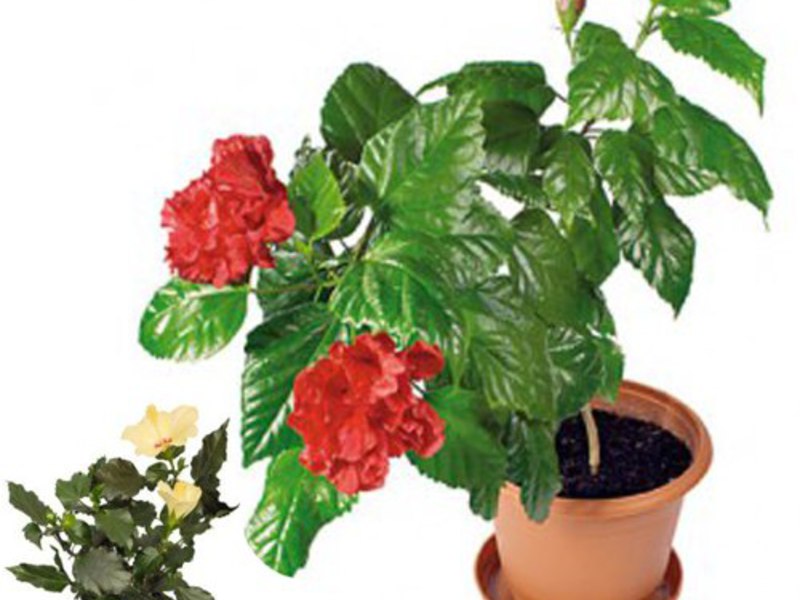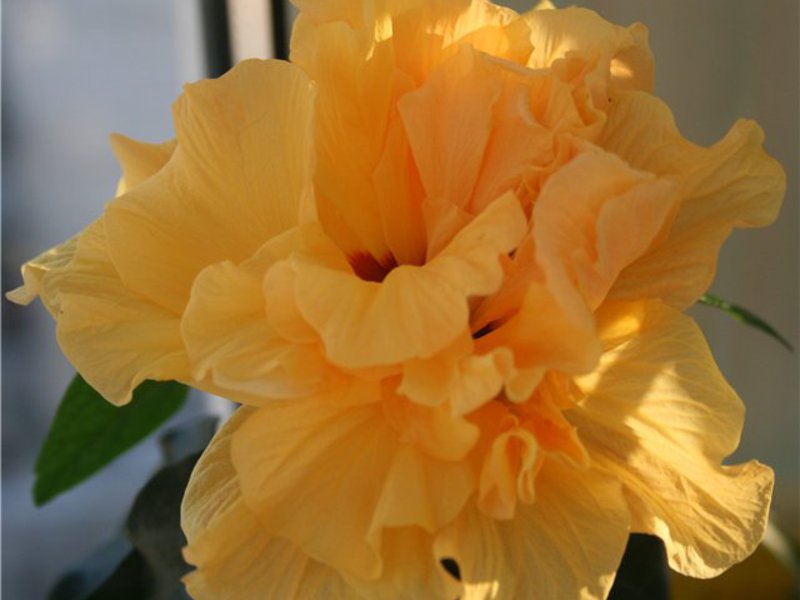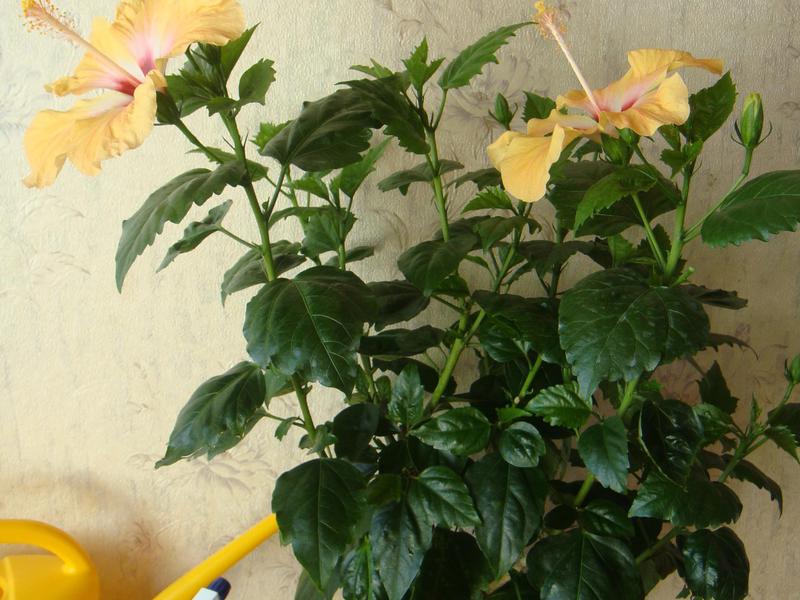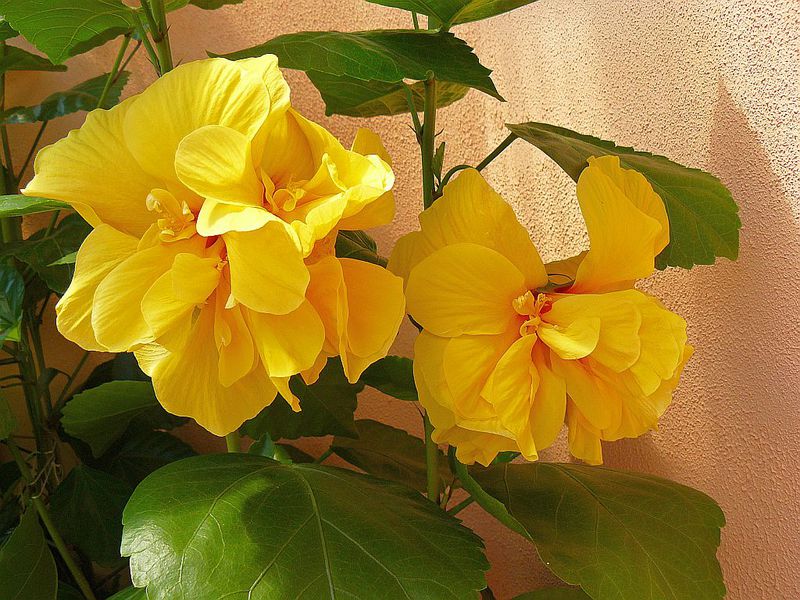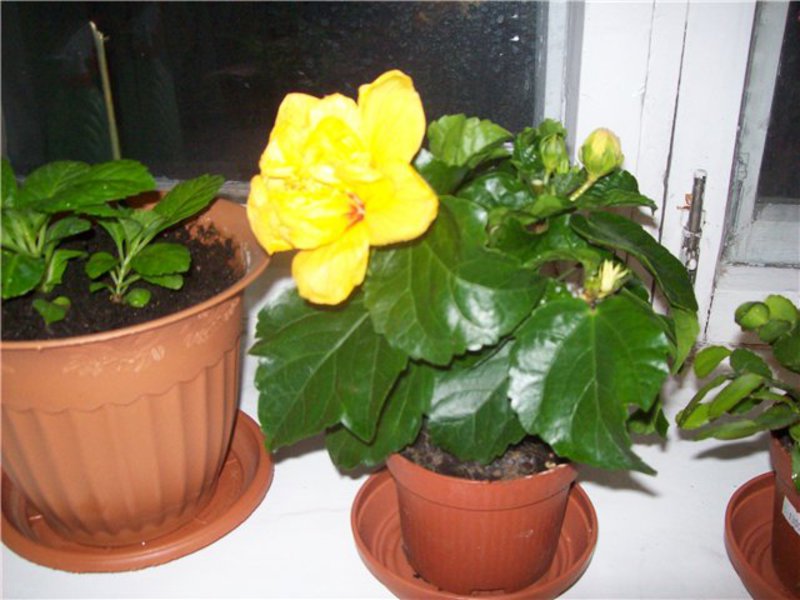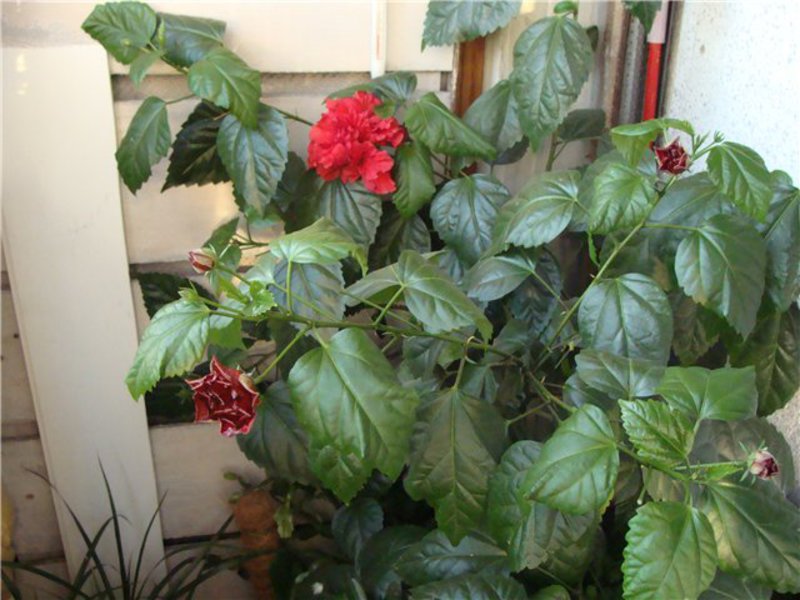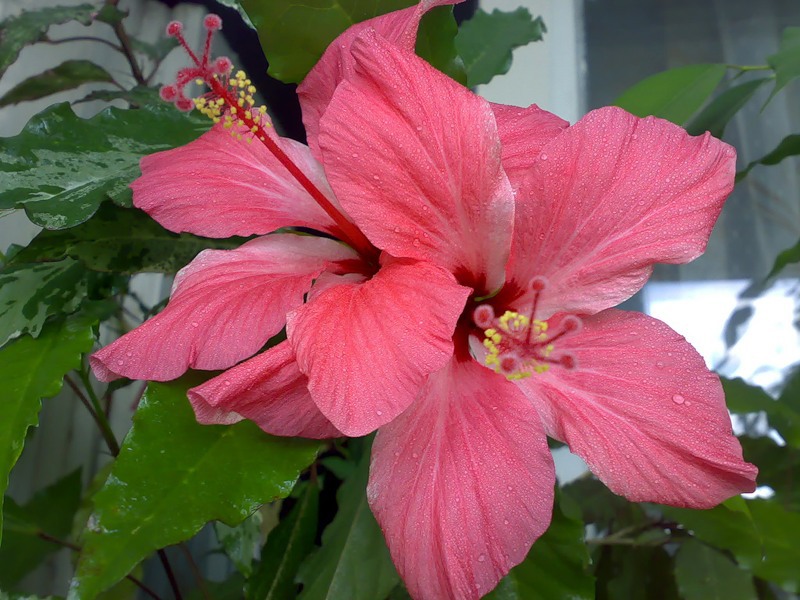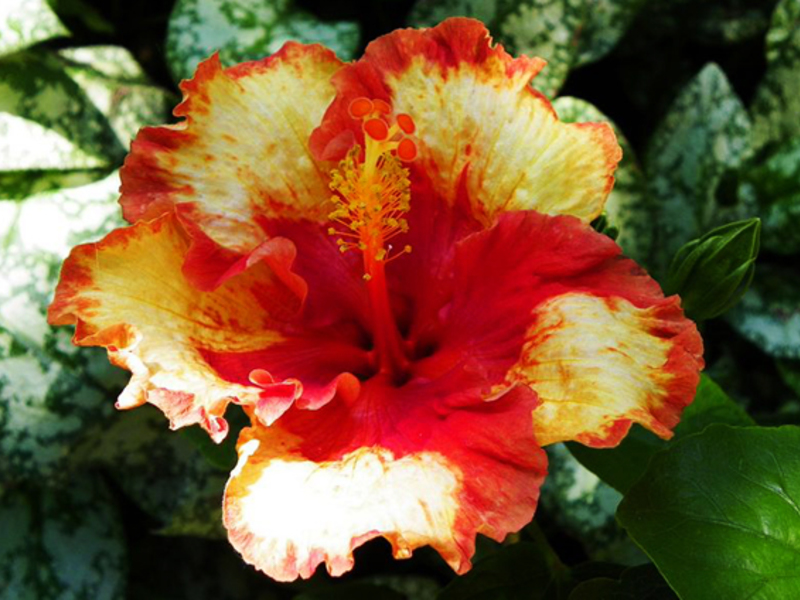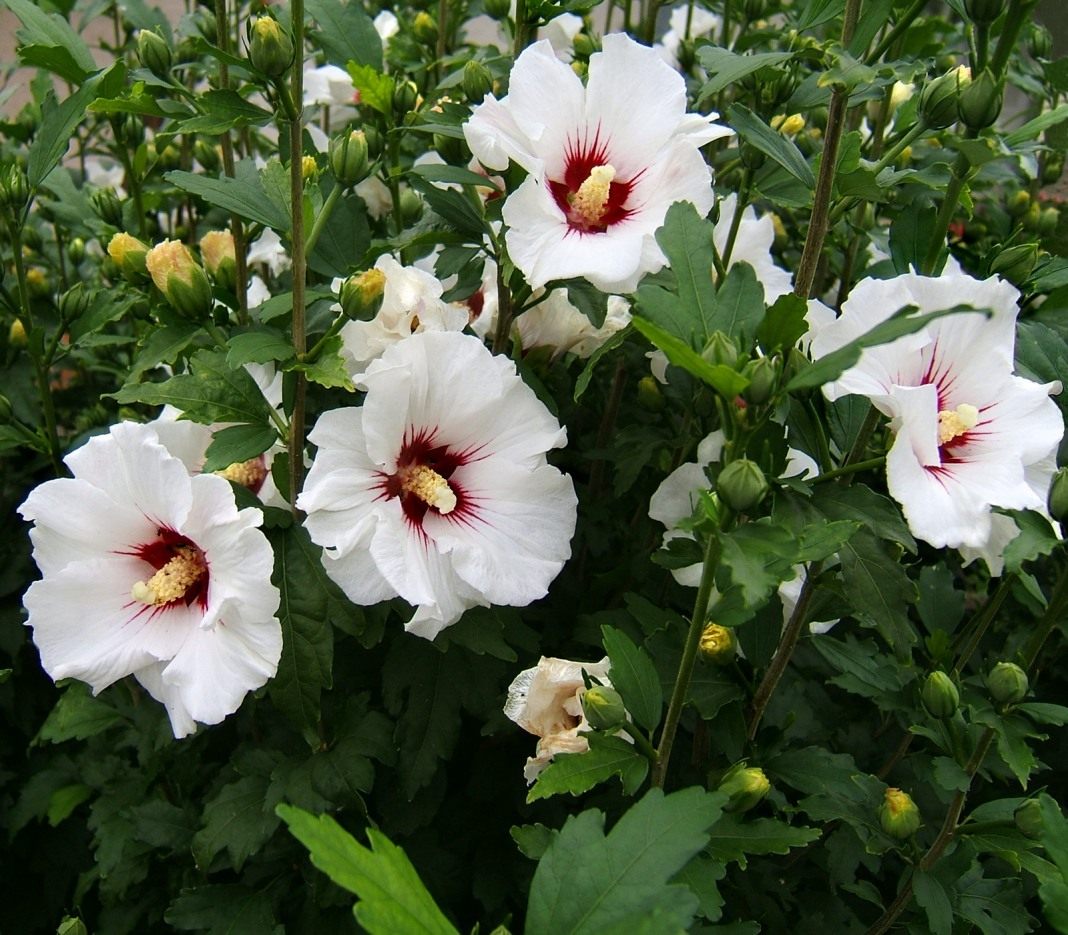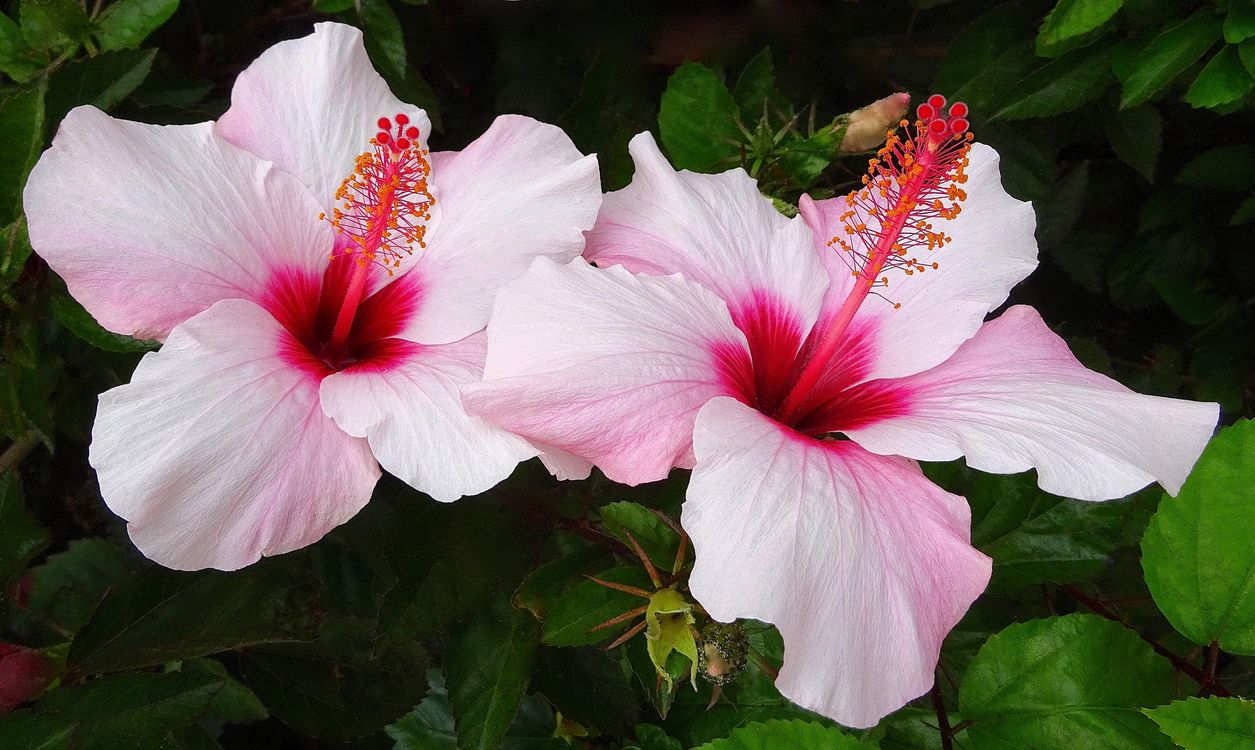In the apartments of flower lovers, you can often find such a houseplant as hibiscus. It belongs to the group of fast-growing flowers, differing not only in its pleasant appearance, but also in its unpretentious care. Even at home, conditions can be created for him so that he feels good here too. First of all, hibiscus needs regular watering and adequate lighting.
Care for him must be appropriate, otherwise there is a risk of not waiting for flowering. This is a key success factor. If hibiscus is regularly taken care of, the owner will be able to enjoy bright, beautiful buds every year. But before the florist has to solve a lot of questions: what kind chinese rose grow at home and how to properly care for it?
Content
General view of the plant and its properties
The habitual habitat of this representative of the mallow family is Asia Minor. But the plant is also represented in other places - Korea and China, where it grows wild. The name of hibiscus sounds quite interesting, which means “a flower for beautiful ladies” in translation. The man got to know him a long time ago, and from those distant times he managed to win the love of flower growers thanks to his beautiful buds.
Hibiscus characteristic:
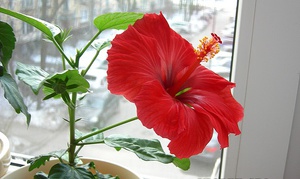 the plant belongs to the group of evergreen shrubs, which in natural growing conditions can reach a height of 3 m;
the plant belongs to the group of evergreen shrubs, which in natural growing conditions can reach a height of 3 m;- the characteristic features of the flower are the branched crown and gray bark;
- in many specimens, very flexible branches are formed during the growing season, which are highly durable;
- in its natural environment, hibiscus blooms for quite a long time, taking the period from June to September. At home, the plant can delight with its beautiful buds all year round. However, this is possible only under the condition of regular fertilization and the creation of favorable conditions for the formation of new shoots;
- One of the features of the Chinese rose is that the owner can enjoy each flower for no more than one day. Fully opened buds begin to fade pretty soon. But if you properly care for hibiscus indoors, you can ensure its abundant flowering. Therefore, regardless of the season, this plant will be able to regularly give beauty to its owner.
Varieties and varieties of hibiscus
The hibiscus family is quite numerous and includes several hundred species... However, there are still not many representatives on this list that can be used for growing indoors. Most types of Chinese roses are intended for decorating garden beds, however, among them you can find those that can grow normally on the windowsill in the apartment:
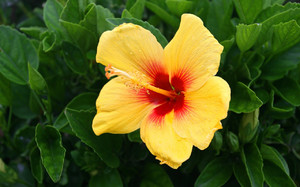 a well-known variety is Chinese hibiscus. Among its features, it is worth highlighting the original shape of oval leaves with a jagged edge. During the growing season, plants form large flowers of a pale pink or red hue.The diameter is usually 16 cm. For indoor cultivation, you can use a group of varieties, including Carmine red, Terry rose, Florida, etc. The main reason for the popularity of these species among amateur gardeners is the bright design of the inflorescences;
a well-known variety is Chinese hibiscus. Among its features, it is worth highlighting the original shape of oval leaves with a jagged edge. During the growing season, plants form large flowers of a pale pink or red hue.The diameter is usually 16 cm. For indoor cultivation, you can use a group of varieties, including Carmine red, Terry rose, Florida, etc. The main reason for the popularity of these species among amateur gardeners is the bright design of the inflorescences;- a well-known species of the family is the hybrid hibiscus. Its uniqueness is given by the unusual color of the buds, which have a delicate pinkish tint. Large petals make them even more beautiful. The hybrid hibiscus owes its appearance to breeders who were able to get it by crossing the pink, holly and red species;
- Of all the currently known types of Chinese rose, the dissected hibiscus is the most original. And first of all, this is due to the unusual shape of flowers with different colors. In the process of growth, long shoots are formed, which can take part in decorating flower beds. In addition, the plants often use the Syrian hibiscus, as well as some other species, although they are more garden plants.
Indoor hibiscus care
For all its unpretentiousness, not all growers manage to enjoy the bright flowering of hibiscus. This can be explained by the fact that not everyone knows how to create favorable conditions for its normal development. As a result, the flower not only does not form buds, but also the crown grows very slowly.
However, in fact, this task is quite solvable. The main thing is that when growing hibiscus at home, you need to take into account a number of principles:
 Regular and abundant watering... Moisture deficiency negatively affects the development of the Chinese rose tree, therefore it is not recommended to allow even short breaks in watering. Plants quickly react to this by yellowing and shedding leaves, and this already creates the danger of their death. You especially need to be careful in the heat of summer, when it is necessary to water more often and in large quantities. Also, the room should maintain optimum air humidity, spraying if necessary.
Regular and abundant watering... Moisture deficiency negatively affects the development of the Chinese rose tree, therefore it is not recommended to allow even short breaks in watering. Plants quickly react to this by yellowing and shedding leaves, and this already creates the danger of their death. You especially need to be careful in the heat of summer, when it is necessary to water more often and in large quantities. Also, the room should maintain optimum air humidity, spraying if necessary.- Good illumination... Experts recommend growing hibiscus on a windowsill located on the sunny side of the house. Without access to bright light, the plant simply will not bloom. The Chinese rose must be provided with enough light at any time of the year. Considering that in winter the length of daylight hours becomes shorter, it is recommended to carry out additional lighting using special artificial light sources.
- Air temperature... Considering that under natural conditions it grows in warmth, when growing indoors it is necessary to maintain a temperature of + 24 degrees. In cold periods, you need to ensure that the temperature does not drop below + 12 degrees. Otherwise, the plant will simply freeze and start shedding leaves from itself. In the summer, when it gets especially hot, it is necessary to regularly ventilate, not forgetting about measures that maintain optimal humidity in the room.
- Top dressing... It is not necessary to apply fertilizers to the soil very often - about once every six months. As a rule, feeding is carried out in September and March. To provide the plant with the necessary nutrients, complex mineral fertilizers are used, combining them with mullein infusion, for the preparation of which the fertilizer must be diluted in water in a ratio of 1:10. In winter, the tree has an increased need for potassium-phosphorus fertilizers. Moreover, in both cases, fertilizers should be applied at least once a month.
- The soil... The plant thrives best on nutritious soils with a pH level of 6. The soil must be neutral. You can grow it in a ready-made soil mixture or prepared by hand.In the latter case, a substrate of leafy, turfy, humus earth and sand is required, which are mixed in a ratio of 4: 3: 1: 1. Ash and peat containing the nutrients necessary for a Chinese rose will be useful in this composition.
- Drainage... In its absence, it is impossible to ensure the normal development of the Chinese rose. In conditions of abundant watering, there is a risk of moisture stagnation, and this is dangerous because over time the roots can begin to rot. Drainage is an effective protection against decay. It is necessary to transplant the plant annually, because during the season it gains a large mass, so there should be enough room in the pot for its roots.
Breeding options for hibiscus
 The most common breeding methods are cuttings and sowing. Moreover, the latter option is more often chosen by breeders who want to develop new varieties of hibiscus. Growing hibiscus from cuttings is the least risky. Young shoots are used here, which are harvested in the summer, when the plant is in the stage of active growth. Several internodes must be present on the planting material.
The most common breeding methods are cuttings and sowing. Moreover, the latter option is more often chosen by breeders who want to develop new varieties of hibiscus. Growing hibiscus from cuttings is the least risky. Young shoots are used here, which are harvested in the summer, when the plant is in the stage of active growth. Several internodes must be present on the planting material.
Propagation by cuttings
After harvesting the cuttings, the cut location follows treat with growth stimulant... In advance, you need to prepare a greenhouse or a pot with wet soil in which the cutting is placed. If the cultivation is carried out in room conditions, then a glass jar is additionally installed on the pot.
After rooting, the cuttings must be transplanted into pots 7-10 cm high, having previously filled them with a substrate rich in humus.
Adding bone meal to the potting mix allows the cuttings to take root much earlier. At the first signs of the beginning of root formation, the cuttings are transplanted into more spacious containers to provide conditions for the development of the root system.
Particular attention must be paid to the correct formation of the bush. Active growth of the cutting can be ensured through regular pinching the lower shoots and pruning... As a result of this operation, new shoots will begin to form quickly in the bush, where flowers will subsequently appear.
For the first time, the plants are transplanted a few months after planting the cuttings. During pruning, branches should be removed no more than half the length. Such a measure will speed up the process of forming an attractive crown. Using this transplanting method allows the plant to enter the flowering phase in the first year.
Seed propagation
For sowing seeds, it is recommended to choose the time in February or early spring. However, first you need to prepare them, for which they are placed in a damp cloth for 12 hours. Then the seeds are placed in a prepared substrate, which is prepared from sand and peat, taken in equal amounts. After sowing, glass is installed on the pot or it can be transferred to the greenhouse where it should be supported temperature not lower than +25 degrees... After the formation of 3-4 leaves in the seedlings, a pick is carried out, transplanting them into pots of suitable sizes. Despite the fact that during the season hibiscus noticeably gains weight, only specimens aged 3-4 years enter the flowering stage.
With proper selection work, a hybrid plant with flowers of unusual color can be grown from seeds. Therefore, any florist who can easily grow a new interesting variety in his apartment can do this business.
Conclusion
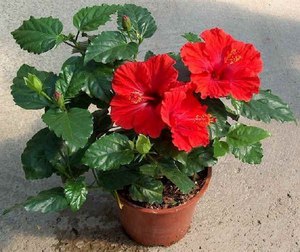 It is no coincidence that hibiscus is popular among beginner and experienced flower growers. Due to its properties, this plant is ideal for indoor cultivation, because hibiscus has not only beautiful buds, but also differs in unpretentiousness in care... Therefore, if a flower lover has no experience in growing such plants, then even with a minimum of knowledge, he will be able to get his first flower at home with a high degree of probability.
It is no coincidence that hibiscus is popular among beginner and experienced flower growers. Due to its properties, this plant is ideal for indoor cultivation, because hibiscus has not only beautiful buds, but also differs in unpretentiousness in care... Therefore, if a flower lover has no experience in growing such plants, then even with a minimum of knowledge, he will be able to get his first flower at home with a high degree of probability.
However, you still need to take into account that care is a determining factor on which not only the development of hibiscus depends, but also the quality of its flowering. After all, there are cases when growers who do not know how to care for hibiscus correctly could not wait for its flowering for several years. The easiest way is to get a new bush from cuttings, which, when favorable conditions are created for them, take root rather quickly and subsequently enter into growth. However, if you want to get something unusual at home, you can also use the seed sowing method, which allows every flower lover to feel like a breeder.

